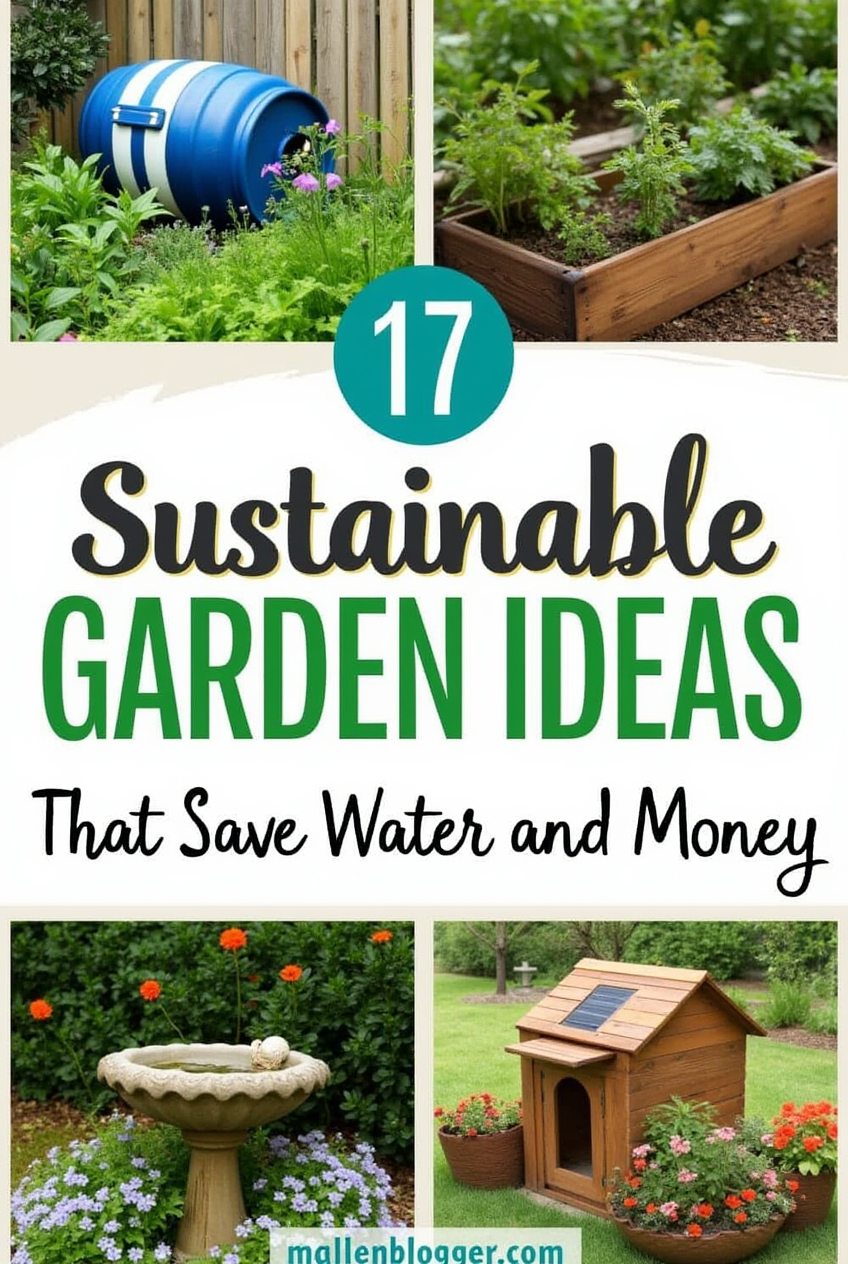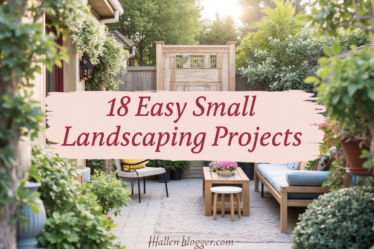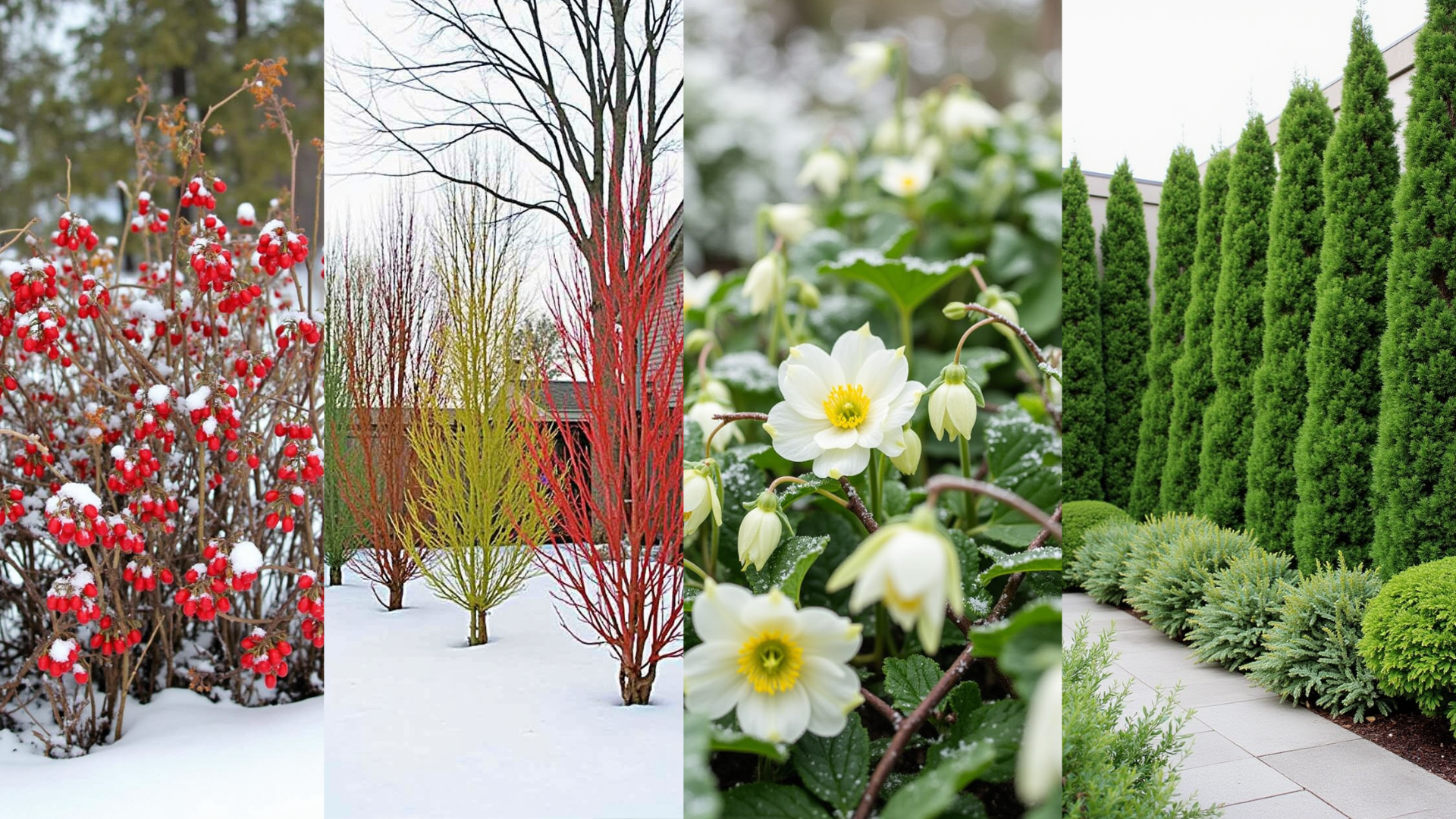
This website contains affiliate links. Some products were gifted for testing. Content may include AI assistance. Images are illustrative, not official Amazon images, and may differ from actual products. As an Amazon Associate, I earn from qualifying purchases.
Dreaming of a gorgeous garden that’s kind to the planet and your wallet? You’re in for a treat! These sustainable garden ideas are all about smarter choices that conserve water, save cash, and keep your space looking lush and inviting. Let’s dig in—pun intended!
1. Install a Rain Barrel
Why let rainwater go to waste when you can store it for your plants?
Step-by-step guide:
- Choose a rain barrel with a spigot for easy access.
- Position it under a downspout from your roof.
- Attach a diverter to direct water into the barrel when it rains.
- Use the collected water to irrigate your garden during dry spells.
Picture this: A sunny backyard with a rustic wooden rain barrel nestled beside a vibrant flower bed. The barrel’s copper spigot gleams in the sunlight, ready to deliver fresh, free water to thirsty plants.
2. Plant Native Species
Native plants are low-maintenance, drought-tolerant heroes!
Step-by-step guide:
- Research plants native to your region.
- Choose varieties suited to your garden’s sun and soil conditions.
- Group them together to mimic their natural environment.
- Mulch around them to retain moisture and suppress weeds.
Picture this: A garden alive with vibrant wildflowers, hardy grasses, and lush green shrubs that blend seamlessly with the landscape. Bees and butterflies flit about, creating a mini wildlife haven.
3. Drip Irrigation System
Efficient watering? Yes, please!
Step-by-step guide:
- Lay out tubing around the base of your plants.
- Install emitters or drip lines where water is needed most.
- Connect the tubing to a timer to automate watering.
- Test the system to ensure even water distribution.
Picture this: Rows of thriving vegetables with a simple drip irrigation system weaving between them. The black tubing is barely noticeable, leaving the focus on lush greenery and ripening produce.
4. Compost for Healthy Soil
Turn kitchen scraps into black gold for your garden!
Step-by-step guide:
- Set up a compost bin in a shaded area.
- Add fruit and veggie scraps, yard waste, and shredded paper.
- Turn the pile regularly to aerate it.
- Use the finished compost to enrich your soil.
Picture this: A charming wooden compost bin tucked into a garden corner, surrounded by fragrant herbs and flowers. Rich, dark compost spills out, ready to nourish the soil.
5. Mulch Like a Pro
Save water and keep weeds at bay with mulch.
Step-by-step guide:
- Choose an organic mulch like wood chips or straw.
- Spread a 2-3 inch layer around your plants.
- Keep the mulch a few inches away from plant stems to prevent rot.
Picture this: A vegetable patch with vibrant green plants popping against a backdrop of golden straw mulch. The soil beneath stays cool and moist, even on hot summer days.
6. Collect and Reuse Greywater
Repurpose water from your home for the garden!
Step-by-step guide:
- Set up a system to divert water from your washing machine or sinks (using eco-friendly detergents).
- Use a bucket or install pipes to carry the water to your garden.
- Apply greywater directly to ornamental plants or fruit trees.
Picture this: A shady garden with a thriving fruit tree, its roots quenched by repurposed water. The system is simple yet effective, blending function with sustainability.
7. Create a Gravel Garden
Perfect for drought-prone areas!
Step-by-step guide:
- Clear the area and lay a weed barrier fabric.
- Spread gravel or small stones evenly over the surface.
- Add drought-tolerant plants like succulents or lavender.
- Arrange large rocks or driftwood for added texture.
Picture this: A sleek gravel garden with pops of color from succulents and lavender, framed by smooth stones. The minimalist design is both modern and eco-friendly.
8. Install Raised Beds
Save water and make gardening easier!
Step-by-step guide:
- Build or buy raised beds with sturdy wooden sides.
- Fill them with nutrient-rich soil and compost.
- Plant densely to reduce evaporation.
- Water directly at the roots to maximize efficiency.
Picture this: A row of neat raised beds brimming with vegetables and herbs, surrounded by a tidy gravel path. The wooden edges add a rustic, organized feel to the garden.
9. Shade Your Soil
Protect your plants with natural shade!
Step-by-step guide:
- Add taller plants or trees to provide natural shade for smaller plants.
- Use trellises to grow climbing vines like beans or cucumbers.
- Create shade sails or pergolas for particularly hot areas.
Picture this: A cozy garden nook shaded by lush climbing vines on a wooden trellis. The dappled sunlight creates a serene, cool atmosphere for plants and people alike.
10. Install Permeable Pathways
Eco-friendly and stylish!
Step-by-step guide:
- Choose permeable materials like gravel, bricks, or pavers.
- Lay a sturdy foundation to support foot traffic.
- Fill gaps with sand or grass for a natural look.
Picture this: A winding garden path made of rustic brick pavers, bordered by soft moss and colorful flowers. The pathway invites you to wander and explore your sustainable paradise.
11. Use Solar-Powered Garden Lights
Light up your garden with energy from the sun!
Step-by-step guide:
- Choose solar-powered lights for pathways, trees, or garden beds.
- Place them in areas that receive plenty of sunlight during the day.
- Let them charge during the day and enjoy a glowing garden at night without using electricity.
Picture this: A magical garden pathway lit by glowing solar lights, casting soft shadows on blooming flowers. The energy-efficient lights create a warm, inviting atmosphere as the sun sets.
12. Plant a Pollinator Garden
Help the bees and butterflies thrive!
Step-by-step guide:
- Choose nectar-rich plants like sunflowers, lavender, and zinnias.
- Group them together to create a habitat for pollinators.
- Avoid using pesticides to keep your garden safe for bees and other beneficial insects.
Picture this: A sunny corner of the garden buzzing with life, filled with colorful flowers that attract bees and butterflies. The plants are healthy and thriving, creating a perfect ecosystem for pollinators.
13. Start a Vegetable Garden
Grow your own food while saving money on groceries!
Step-by-step guide:
- Pick a sunny spot in your yard for the vegetable garden.
- Prepare the soil by loosening it and adding compost.
- Plant easy-to-grow veggies like tomatoes, peppers, and herbs.
- Mulch around the plants to retain moisture and prevent weeds.
Picture this: A bountiful vegetable garden brimming with plump tomatoes, fresh herbs, and crunchy lettuce. The rows are neatly organized, with signs marking each plant’s spot in the sun.
14. Repurpose Old Containers for Planters
Give your old items a second life as planters!
Step-by-step guide:
- Find old containers like buckets, tin cans, or wooden crates.
- Drill holes in the bottom for drainage.
- Fill them with soil and plant herbs, flowers, or succulents.
- Arrange the planters on a porch, patio, or garden bed for a quirky, eco-friendly touch.
Picture this: An eclectic collection of upcycled planters sitting on a rustic wooden bench—tin cans with bright petunias, a wooden crate overflowing with lavender, and a bucket of cheerful marigolds.
15. Use Natural Pest Control
Keep pests away without harmful chemicals.
Step-by-step guide:
- Introduce beneficial insects like ladybugs and lacewings to your garden.
- Plant herbs like mint, basil, and rosemary to repel common pests.
- Use natural sprays like neem oil or garlic water to deter unwanted critters.
Picture this: A garden flourishing with greenery, where ladybugs crawl on leaves, and the air is filled with the scent of mint and basil. You can practically see the harmony between the plants and the natural pest control in place.
16. Create a Wildlife Habitat
Invite nature into your garden with a wildlife-friendly space!
Step-by-step guide:
- Add a water feature like a birdbath or small pond.
- Plant a variety of trees, shrubs, and flowers to provide shelter and food.
- Leave a few areas of your garden a little wild, with fallen leaves and logs for creatures to hide in.
Picture this: A serene garden with a sparkling birdbath at the center, surrounded by lush trees and flowering shrubs. Birds chirp from the branches, and small critters sneak between the greenery.
17. Grow a Green Roof or Vertical Garden
Use your space creatively with a green roof or vertical garden!
Step-by-step guide:
- Install a trellis, or set up a vertical planter system against a wall or fence.
- Choose climbing plants or herbs that thrive in vertical spaces.
- For a green roof, ensure the structure can support the weight and add lightweight soil and plants.
Picture this: A charming vertical garden clinging to a sunny wall, with bright green climbing vines and herbs growing on wooden shelves. The air feels fresh, and the plants add texture and beauty to every inch of space.
now you have 17 sustainable garden tips to help save water and money while creating a beautiful, eco-friendly space. Time to start transforming your garden into a green oasis that’s both good for the earth and your wallet! Happy gardening! 🌿💧🌻



